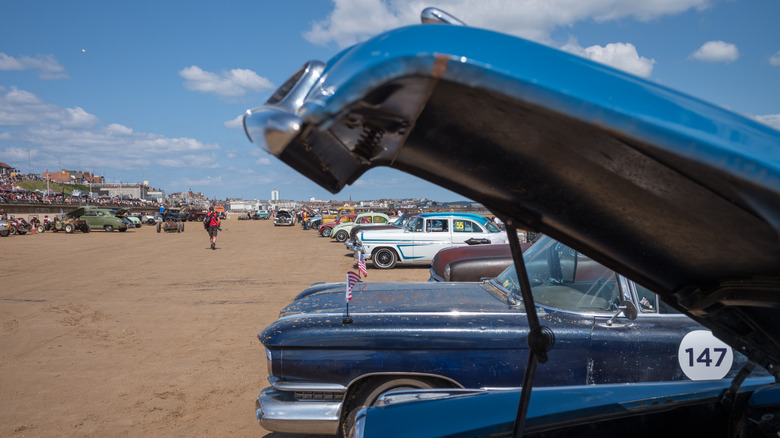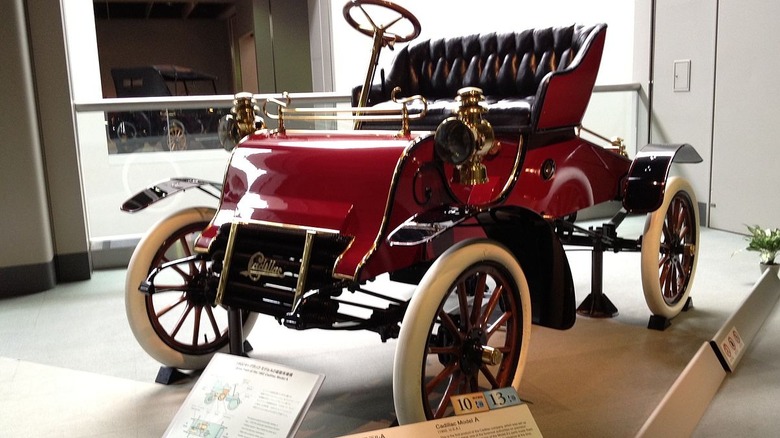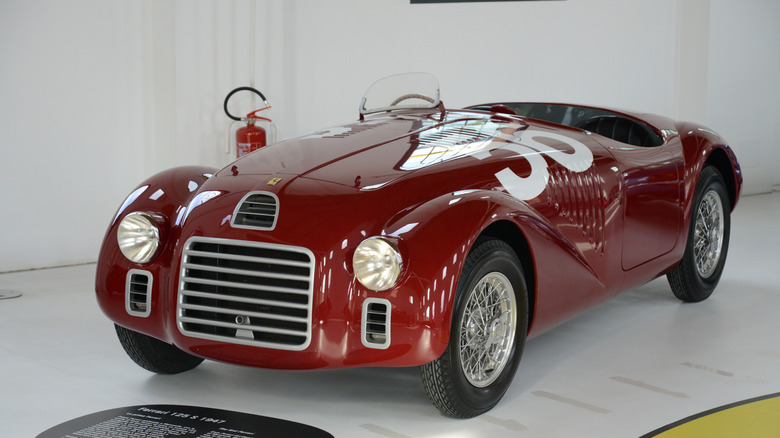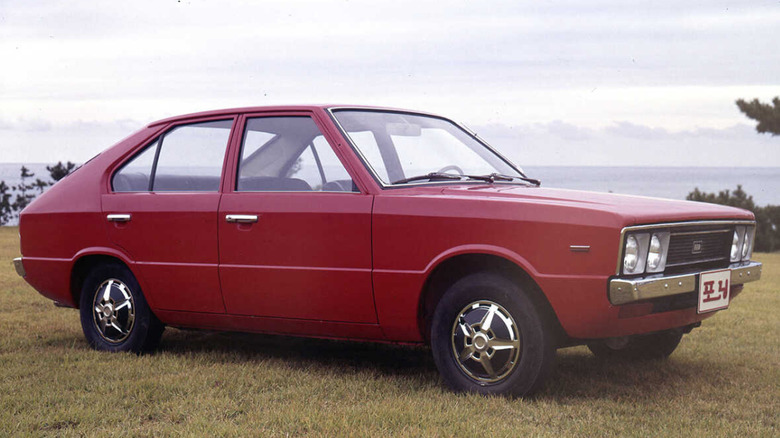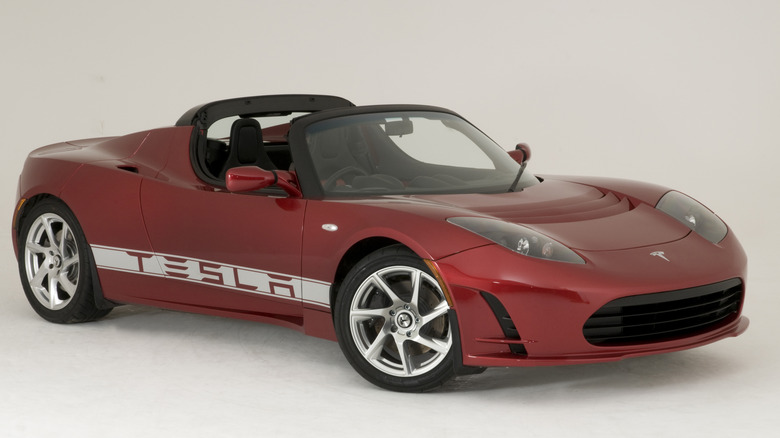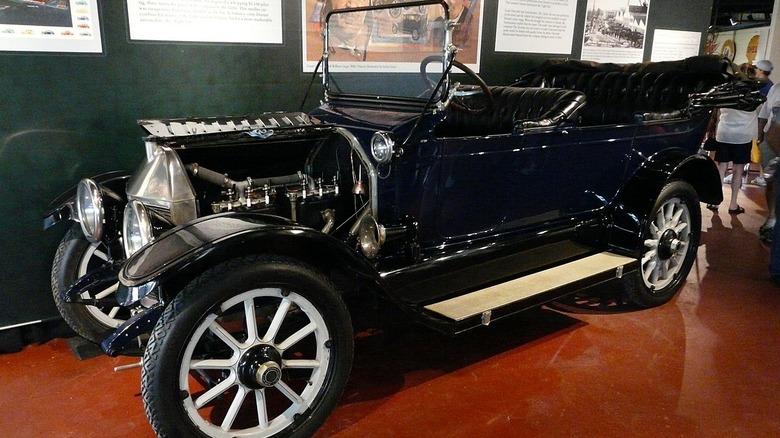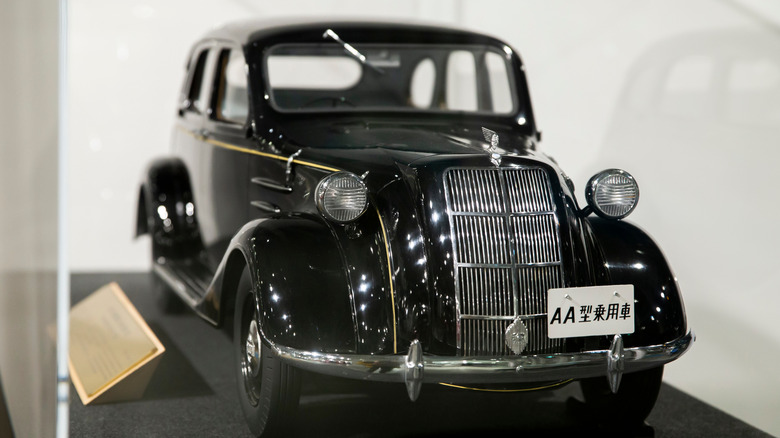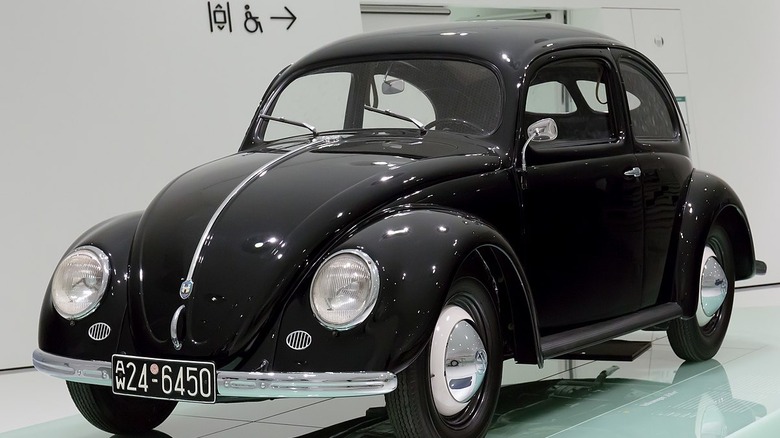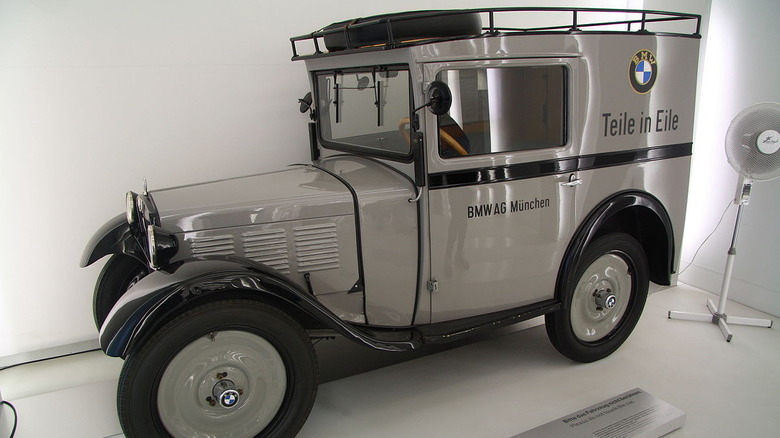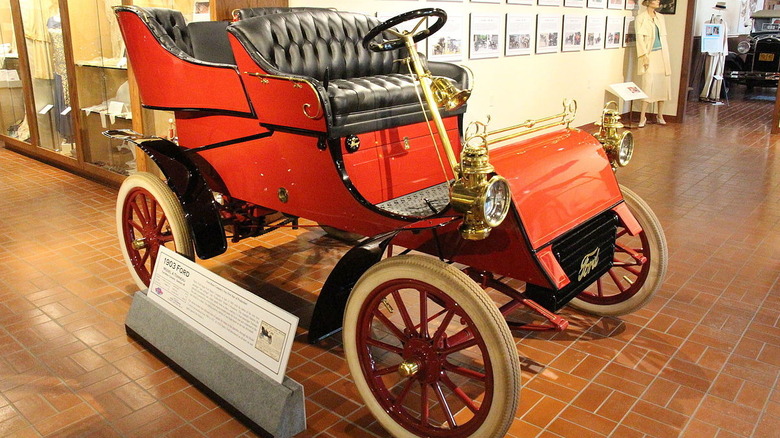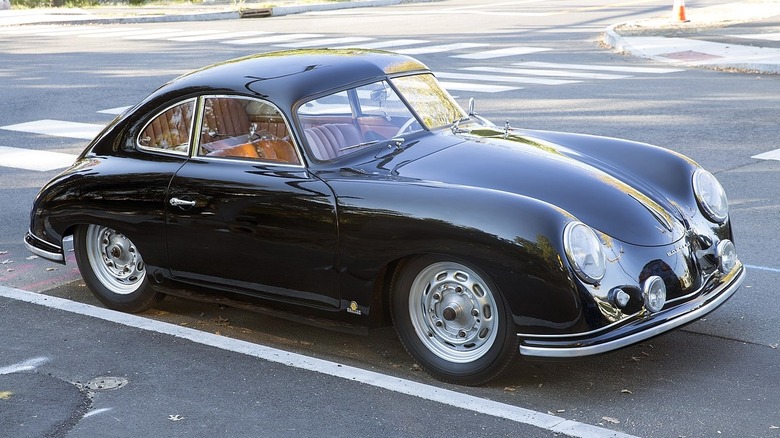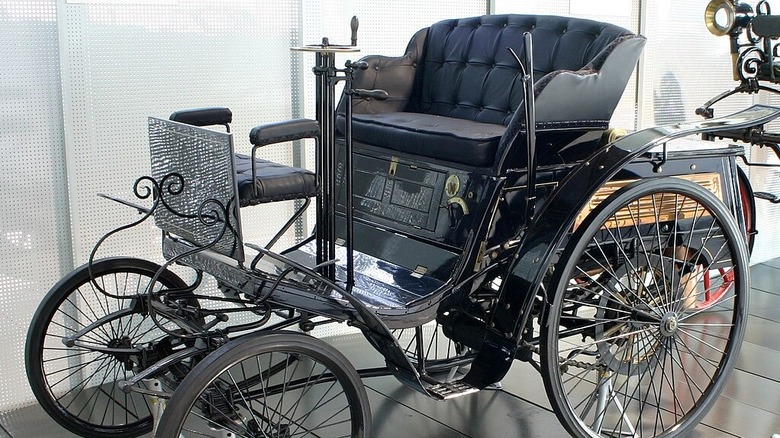13 Of The Biggest Car Brands In The World (And Their First Cars)
Even the mighty oak sprouts from the smallest seed. With more than a hundred years of automotive history in the books, we have seen the rise and fall of uncountable auto manufacturing companies. For every McLaren there are a hundred Pierce-Arrows. Starting and maintaining growth in the ultra-competitive field is nearly impossible, and keeping which companies and brands purchased and operate which is like trying to parse a noble family tree.
Nonetheless, some car-building brands have met with such success that their names a ingrained in the automotive, historic, and cultural fabric. Each of these behemoth names currently operates multi-national networks of producing and building top-notch modern automobiles, but none of them started at the top.
Let's take a drive into automotive history to uncover the humble and sometimes surprising beginnings of some of the most famous auto brands in the world. From diminutive pickup trucks to modified trikes to utilitarian people-carriers, each of these 13 biggest car brands in the world at one point had to put out its very first car.
Cadillac
Cadillac has long been absorbed into the General Motors conglomerate that dominated Detroit in the 20th century, but it was once an independent entity. Founder Henry Leland established one of the world's earliest automotive companies, and named it after Antoine de la Mothe Cadillac, the discoverer of Detroit.
Leland cut his teeth tooling bicycles and building marine engines before moving up to developing automobile engines for Ransom Olds by 1899. Leland started Cadillac in 1902. Its claim to fame was not initially luxury but the interchangeable nature of the auto parts Leland's firm painstakingly designed and assembled. Rugged and reliable, Cadillacs could be broken down and built up with relative ease — paramount in a society not yet adapted to automobile infrastructure.
The first Cadillac vehicle emerged so early that the term "horseless carriage" was still applicable. It was a 1903 model named the Cadillac Runabout. It was a product of rubber, wood, metal, and brass, and it used a Cadillac engine with a Ford body. Not much to look at, the Runabout proved the seed for the mighty oak. Some of the best-looking Cadillacs have transcended the automotive world to become cultural icons, while in the performance arena, the company is set to return to Formula 1 racing in 2026.
Renault
Renault vehicles don't get a lot of love in North America, but the French firm still makes waves in Europe, Asia, and Africa. Even older than Cadillac, Renault was founded in 1898 by Louis Renault and his brothers, Marcel and Fernand, who sought to participate in racing. The company grew until World War I, which significantly expanded its business as a supplier of trucks, ambulances, and even an early version of a tank, the compact FT-17, on the way to becoming a multinational company operating in over 120 countries.
At the tender age of 21, Louis Renault fitted a transmission of his design, along with a fourth wheel, to a De Dion Bouton trike. At the leer of his friends, he proved the efficacy of his machine by driving it up the steepest street in Paris.
Renault would spring to enormous heights from the its first-ever vehicle: the adorably named Voiturette. French for "little car," the Voiturette is also known as the 1898 Renault Type A. The Voiturette is hopelessly archaic by today's standards, but it was the beginning of something that would grow enormously. Today, Renault is the fourth-largest automotive manufacturer in the world, operating brands Dacia and RCM and engaging with a strategic alliance with Mitsubishi and Nissan.
Ferrari
Ferrari is a company of two faces. Obviously, this brand has been in the big leagues of luxury car making for a long time, with a market capitalization of over $111 billion as of writing. However, it also has a reputation as a scrappy, race-oriented team of ferocious competitors, built on the outsize personality of its founder, Enzo Ferrari.
Initially, Ferrari served as a test driver for Alfa Romeo, before he established the Scuderia Ferrari racing team in 1929. Sponsored by Alfa Romeo, the team proved competent, but Ferrari wanted to pitch his own tent, and that required additional funding. So he did what he liked most: He built a car.
The Ferrari 125S, introduced in 1947, was a milestone in automotive history. It was the first car to bear the pure Ferrari DNA. While it wasn't the first production car to use a V12, it was arguably one of the best at that time. The 1.5-liter V12 engine produced 117 hp at 6,800 rpm. This vehicle not only opened new horizons for Ferrari but also set a standard for performance and innovation. From that point onward, the iconic Ferrari red has streaked roadways and lit podiums around the world.
Hyundai
Hyundai began life in 1947 as the Hyundai Engineering and Construction Co. It was incorporated as the Hyundai Motor Company in 1967. Founder Chung Ju-yung realized that cars would be the lifeblood of Korea if the roads his company was building for the government were any indication.
Hyundai Motor Company's journey began with the assembly of the Ford Cortina at a modest Ulsan production facility. This facility, which would later evolve into one of the world's largest, was a testament to Hyundai's rapid growth and ambition. As they familiarized themselves with the auto manufacturing process, it was only a matter of time before Hyundai would launch its own car.
The 1975 Hyundai Pony, Korea's first passenger car, was a testament to Hyundai's global ambitions. The four-door sedan, designed by Giorgetto Giugiaro, who also had a hand in the design of the Chevrolet Corvair, Alfa Romeo Sprint, Fiat 850, and some of the best-looking Ferraris ever designed, was a milestone. It later got station wagon and hatchback iterations and earned laurels as Korea's first mass-produced and exported car, marking the beginning of Hyundai's journey to becoming a global automotive powerhouse.
Tesla
Tesla is inextricably linked with Elon Musk at this stage, but the global phenomenon was once a mission-oriented startup. Chief Executive Officer Martin Eberhard and Chief Financial Officer Marc Tarpenning wanted to build a viable electric car. Elon Musk joined the team with a $30 million investment, which ultimately earned him the title of chairman in 2004 and led to his appointment as CEO in 2008.
If you thought Hyundai was fresh blood in the automotive industry compared to Cadillac and Renault, consider that Tesla's first car was introduced in 2008. The Tesla Roadster was a leap forward for EV technology. It could sprint to 60 mph in around 4 seconds, hit a 125 mph top speed, and drive for 220 miles on a single charge. It was also visually appealing, with a Lotus apex-carving vibe and a flowing mix of curves and angles. Musk engineered the cross-promotional mother lode when SpaceX launched a Tesla Roadster into outer space, where it remains to this day, racking up billions of miles of space travel.
Despite being a relatively new manufacturer, Tesla's substantial market capitalization and innovative technology have had a significant impact on the automotive industry. Their push for long-range battery technology has set a new standard. Today, nearly 20 years later, it's rare to find a mainstream manufacturer without an exclusive electric vehicle (EV), and many are building entire EV lines.
Chevrolet
If American manufacturers with French-sounding names (a la Cadillac) are more your speed, Chevrolet is a legend that will fill this niche. Founded in 1911 by Swiss (not French) race car driver Louis Chevrolet and former leader of Buick William C. Durant Chevrolet and its famous bowtie logo have grown into a brand as powerful and recognizable as Coca-Cola.
Chevrolet personally provided numerous insights from his driving experience into the design. Along with Durant and some investment partners, Chevrolet developed a prototype automobile known as the Series C Classic Six. From 1911 to 1913, Chevrolet's production line was graced by the Classix Six. With a liquid-cooled six-cylinder engine and a cast-iron block, it could reach an impressive 65 mph, setting a high bar for performance vehicles of its era. Despite its cost, the Classix Six was an example of Chevrolet's commitment to both form and function, with a design that exuded an artistic flair.
One of Louis Chevrolet's influences on the company was his refusal to compromise. He wanted quality, reliability, and performance in a vehicle bearing his name. Unfortunately, the partnership would not last. Chevrolet would sell his stake in the company that bore his name to Durant in 1915. From there Chevrolet would star as a main player in the General Motors show of the 20th century.
Toyota
Perhaps the world champion among auto manufacturers, Toyota is renowned for its reliability, global reach, luxury, and performance across its various brands. Born in 1894, founder Kiichiro Toyoda grew up under the tutelage of an inventor father who established an automatic loom facility. After university training, Kiichiro traveled to the United States and England, returning to Japan with an ambition to produce an automobile. He started the Toyota Motor Corporation in 1937.
The first passenger car the company produced was the Model AA. Designed in 1935, it was stately, with flaring fenders, a handsome running board, and a self-serious air. Under the hood, an in-line six-cylinder displaced about 3.4 liters.
The AA was a groundbreaking experience for the company. It ended up informing much about Toyota's later project and future historical nameplate: the Toyota Crown, not to mention the Corolla, Camry, and a litany of other vehicles stretching from Scion to Lexus. Toyota has made a significant impact on the automotive world. It has been the world's largest manufacturer for five consecutive years.
Volkswagen
The people's car is infamously steeped in one of the darkest eras of history. While the Volkswagen Group is one of the largest carmakers in the world today, it began as a government project in Nazi Germany. The idea was to build an affordable vehicle for the German people. Ferdinand Porsche, whose handiwork appears later on this list, was a young engineer who worked on the project.
The company undertook wind tunnel testing used for aircraft and devised a design which used as few mechanically complex parts as possible. Cheap mass production was the name of the game. A factory went up in Wolfsburg and began producing KdF-Wagens – later known as Type 1s, and, ultimately, Beetles. Volkswagen's first official car was not to last. The war promptly swept the world up in a half-decade and more of madness, and the company built Kubelwagens and other military machinery.
The Volkswagen concept found an unlikely revival in the ruins of post-war Germany. Mass production of the Beetle found new footing, and it, along with its cousin, the Volkswagen Bus, would grow into countercultural icons in the West during the 1960s. Volkswagen has persevered through controversy and emerged as the marquee brand in one of the world's largest automaker portfolios.
Honda
Though the two are ostensibly rivals in the market, Honda and Toyota share some characteristics. Soichiro Honda was born near Mount Fuji in Japan in 1906 — just 12 years after Kiichiro Toyoda. Honda trained as a mechanic before opening a company that produced piston rings. With his factory destroyed by the Second World War, Honda set up a new company in 1948 and built reliable and inexpensive motorized bicycles that got people moving after the war.
Installing engines onto bicycle frames is not the global manufacturing machine Honda runs today, but it taught the company how to refine process and scale. By 1963, Honda released its first production four-wheeled vehicle, and it isn't the Sports 500 or N600 many would guess.
The Honda T360 mid-engine pickup truck debuted at the 9th Japan National Auto Show in October 1962. Alongside it on the dais were Honda's promising and sporty S360 and S500 models Honda opened an office in Los Angeles in 1959. It was ready to jump to international auto production after 15 years of strategy and expansion. The odd little pickup is often buried behind the meteoric rise of Honda as a company. It earns its name as Honda's first production vehicle by becoming available for sale in August 1963, while the S500 hit showroom floors in October.
BMW
BMW may have taken a step into the tight road-dominating roadster market with the 2002 Turbo back in the '70s, but its pedigree dates back to 1916. The Bayerische Flugzeug-Werke, a producer of aviation engines formed that year, changed its name to the Bayerische Motoren Werke the following year. Like Honda, BMW built motorcycles initially before scaling up to automobiles.
The first BMW production automobile arrived in 1928. The company has made a name for itself with the quality of its early motorcycle. Now, it offered a convertible two-seater called the 3/15 PS DA 2. Aside from a name that flows from the tongue like honey, the 3.15 PS DA 2 carried two people on a British Austin Seven frame and a 750cc four-cylinder with 15 hp.
BMW's early foray into the automobile market was not just a local success, but a global one. The compact coupe from the German firm made waves worldwide, leading to production in Japan, France, and the United States. BMW continued to refine the style over the years, enhancing the brakes, body, and interior. The first production car to bear the BMW badge ceased production in 1931, marking the end — and the beginning — of an era.
Ford
Ford's story is inextricably linked to American industrial history. The original Henry Ford famously popularized the assembly line, revolutionizing production in the United States. Like Chevrolet, the brand became an integral part of the 20th century's fabric. Unlike Louis Chevrolet, the Ford family, who founded the company, remained involved with it.
We bandy about words like iconic and legendary frequently, but there is nowhere in the history of automobiles that Ford hasn't performed like a champion. The perennially best-selling F-150, the world-class Mustang, and the stable of Cougars and Continentals under the Mercury and Lincoln brands are all proof that Ford's done it all.
Including something no one else has: change the fabric of a society. Ford's first production vehicle Before his mass production of the Model T provided the first affordable internal combustion conveyance for thousands of American families, or his factories retooled for assembly work, the original Henry Ford produced the Model A.
The 1903 Ford Model A Runabout was equipped with a two-cylinder engine positioned under the seat and a chain-driven rear axle. It was neither as hearty nor as revolutionary as the Model T that would come after, but it cleared the barrier to entry into the car market with sufficient success to launch the Ford Motor Company.
Porsche
Porsche has carved its own path in the automotive world, a path that has been marked by innovation and excellence for decades. While Ferdinand Porsche's early experience was with the Volkswagen project, it was his unique vision that led to the creation of his own company. Today, Porsche operates within the Volkswagen Group as a limited partner, yet it continues to push the boundaries of automotive design, creating some of the world's most exceptional track and street cars. Unlike some entries on this list, Porsche has always been dedicated to performance, a legacy that began with the iconic Porsche 356.
With Ferdinand Porsche, the elder, fresh from a lifetime of experience at Volkswagen and Daimler-Benz, he took his son, Ferdinand Porsche Jr., under his wing. The two conspired to install a 40-hp Beetle engine into a car of their design. The result was the 1948 Porsche 356/1 Roadster, replete with a 1.1-liter air-cooled pancake engine.
There is no more inspiring throughline in automotive design than the link drawn between the original 356 and the Porsches of today. Even with the rise of wind tunnel technology and advances in aerodynamics, there is something true about the original 356 lines. Porsche has stepped outside of its line with admirable results. The Cayenne and Panamera were controversial for their time, but Porsche hasn't abandoned its midship, flat-engine ethos.
Mercedes-Benz
No automotive maker has a clearer claim to the invention of the automobile. Renault may have wowed his friends with his tricycle, and Ford might have revolutionized the industry in America. Still, Mercedes-Benz traces its roots directly to the man with the strongest claim to the invention of the automobile.
Steam had its era, and the first viable internal combustion motorcar was not an instant creation of a genius. The Benz Patent Motor Car of 1885-1886, the earliest internal combustion automobile, was a product of Karl Friedrich Benz's meticulous engineering. This invention, a few years later, would lead the world to the first produced automobile.
The 1894 Benz Velo was a sophisticated horse carriage powered by the industrial magic of internal combustion. It proved to be a rare revolutionary product that achieved early commercial success. Engineers, tinkerers, hobbyists, and consumers worldwide would soon fall in love with the art and engineering of the modern motorcar. Benz's work ultimately inspired every entry on this list and much more.
